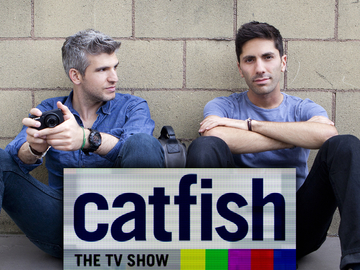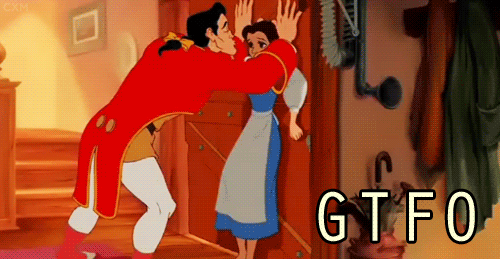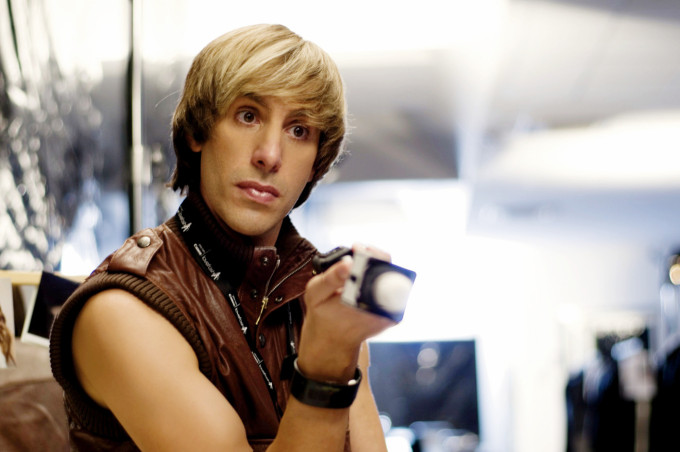 If I said I’ve never walked into an interview thinking more about just getting this shit over than how I come across to a potential employer, I’d be lying. For one reason or another, interviews are one of those necessary evils that you’ve just got to put up with to make it in the world of work, kind of like spreadsheets, conference calls or dealing with HR Generalists.
If I said I’ve never walked into an interview thinking more about just getting this shit over than how I come across to a potential employer, I’d be lying. For one reason or another, interviews are one of those necessary evils that you’ve just got to put up with to make it in the world of work, kind of like spreadsheets, conference calls or dealing with HR Generalists.
But, to be fair, my attitude might be crappy, but at least my cynicism comes from a pretty logical place.
My antipathy about interviews comes from the fact that even if you commit a glaring spelling error on your resume (my personal pet peeve – grammar is one thing, but really, people?) or hyperbolize a few of those bullet points on your resume, that doesn’t preempt you from the hiring process.
Spelling stuff wrong shows attention to detail is sorely lacking. Similarly, overstating your experience is pretty good proof that you’re lacking integrity, and even a white lie is still a lie.
These everyday occurrences should be red flags during the screening and selection process, but for some reason, lacking both veracity or validity doesn’t count as a criteria for getting hired. Interviewing, on the other hand, is seen as an imperative. You know, so you can determine things like professional values and culture fit, even if their resume and references already tell you all you need to know to knock them the hell out of process.
That’s because interviewing and recruiting are inexorably intertwined, and the job interview is seen as one of the most important core competencies in talent acquisition today. Interviews have a long legacy, after all, and even while the rest of recruiting seems like it’s pretty much always evolving, interviewing remains stuck in the status quo. We’ve fundamentally changed the way we do pretty much everything in recruiting, but somehow, interviews are just as shitty and ineffective as ever.
Recruiting Has Changed. Interviews? Not So Much.
 The way hiring managers and recruiters approach interviewing is largely the same as it was decades ago; bring a candidate in, ask them a bunch of cliche questions (“What’s your greatest weakness?”) and then making some sort of flash judgement based on a combination of confirmation bias and gut instinct.
The way hiring managers and recruiters approach interviewing is largely the same as it was decades ago; bring a candidate in, ask them a bunch of cliche questions (“What’s your greatest weakness?”) and then making some sort of flash judgement based on a combination of confirmation bias and gut instinct.
We call candidates into get to know them better, but they’re just sitting there sweating it out in ill-fitting suits that can’t quite hide their discomfort at having to go through this crap again.
Of course, the ones who normally get extended the offers are the often simply the ones who put on the most convincing act and say what they think you want to hear, not what they want to say, meaning that you never really get to know anyone by interviewing them, because you never meet the real person you’ll be working with and sitting next to every day at the office.
They say recruiting doesn’t end at onboarding, but faking it through a “culture gut check” ends almost the same second they sign on the dotted line and slip off that superficial smile and forced facade inherent to successful interviewing.
Sure, there are a ton of employers out there attempting to add some degree of innovation (or at least improved efficacy) to the interview process, from recruiting technologies like video interviewing solutions to training how to ask better, behavioral-based questions to score standardization, but their impact on interviewing has been minimal. Nope.
It’s still the same old shit, and as this video below can pretty much attest, both employers and candidates are in on the game.
But while we still haven’t figured out how to make interviews stop sucking so badly, there’s one thing that recruiters today need to figure out to address one of the most persistent problems in interviewing, one that will kill pretty much any process in its tracks. Meet the catfish.
You’ve Been Catfished
 Now, I can’t help but feel a little bad for recruiters who were in this business before the internet even existed. I don’t know how many of these dinosaurs – er, industry veterans – actually read this blog, but I’m guessing interviewing was quite the circus (or freak show, depending on your candidate pool).
Now, I can’t help but feel a little bad for recruiters who were in this business before the internet even existed. I don’t know how many of these dinosaurs – er, industry veterans – actually read this blog, but I’m guessing interviewing was quite the circus (or freak show, depending on your candidate pool).
First off, without profile pictures, you had no idea what the candidate looks like, much less stalk their digital footprint so they can source the weird. Yeah, source the weird, you know, figuring out whether or not that cleaned up candidate is, in fact, a total sociopath, a complete douchebag or has some fundamental flaw that might come out once they’re actually up there with no filter in front of your key stakeholders and hiring decision makers.
Which, of course, makes you look like you don’t know what you’re doing, even if you really didn’t know what a complete and utter psycho was hiding behind that resume when you invited them in. I’m guessing this happened a lot, because I imagine there was quite a lot of candidate catfishing going on in the age of recruiting without the internet.
For those of you who haven’t heard of “catfishing,” or seen the eponymous MTV show, the Urban Dictionary (the most authoritative and august source on this sort of stuff) defines a catfish as “someone who pretends to be someone they’re not using Facebook or other social media to create false identities, particularly to pursue deceptive online romances.”
Yeah, there’s nothing less romantic than a job interview, but you’ve all heard that whole, “looking for a job is like dating” cliche, and interviews are that time when candidates have to “put their best foot forward,” which, of course, is a fancy way of saying “lie through their teeth to get the gig.”
And most candidates are a step ahead of recruiters when it comes to online research, selectively blocking social profiles, sanitizing their statuses and using social and sites like Glassdoor to come up with stock answers to even the quirkiest interview questions – and even get insight from current employees on the types of answers that work best to get an offer.
But hey, transparency is a good thing these days, right? Even when it preempts employers from actually getting meaningful insights or information during the interviewing process.
Of course, recruiters and hiring managers are trying to fight fire with fire, and a whole array of recruiting tools and technologies have popped up out there to dig up the real dirt on candidates’ personal and professional history. But even if people aggregators have evolved into one of the hottest categories in HR Technology, and predictive analytics make it easier to forecast fit without any sort of subjectivity, job interviews can still go horribly, horribly wrong.
Why Good Interviews Go Bad
 It’s amazing to me that even with all the resources out there online, from specific reviews to general advice, that so many candidates still seem to fail interviews in such an epically awful fashion.
It’s amazing to me that even with all the resources out there online, from specific reviews to general advice, that so many candidates still seem to fail interviews in such an epically awful fashion.
Of course, a lot of this kind of stuff is just common sense, which the worst offenders (like the dude who spread 50 pens across the table) probably don’t have a ton of to begin with.
The bottom line for why interviews go wrong is pretty simple, I think: it’s because outside of the office, candidates are real people with real lives, and interviews require them to leave that person at the door if they want any shot in hell of working at your company – instead, they have to become sweeping, smiling caricatures instead of just being themselves.
Of course, that’s a good thing for those candidates who are so weird that their personality “quirks” just can’t be overlooked, no matter how good or in demand their experience might be. If you’ve ever hired developers or programmers, you probably already know this.
The Worst Interviews Ever, Redux: Dumb and Dumber
 Just when I thought it couldn’t get any weirder than the examples outlined in my previous post, The Worst Job Interviews Ever, it turns out that I was really, really wrong. In fact, it was really just the tip of the iceberg, and elicited some really interesting (and hilarious) interviewing horror stories that would give any recruiter nightmares.
Just when I thought it couldn’t get any weirder than the examples outlined in my previous post, The Worst Job Interviews Ever, it turns out that I was really, really wrong. In fact, it was really just the tip of the iceberg, and elicited some really interesting (and hilarious) interviewing horror stories that would give any recruiter nightmares.
There must be something cathartic to any phrase that starts off with “oh, let me tell you about MY worst interview,” because the hits kept on coming.
The kinds of recruiters who read this site know all about weird – and have so many great stories that based on their tales from the talent trenches, I felt it was only apropos to write a second part to the original post to share some of the most hilarious and unbelievable (but true) interviews our readers have experienced, with a little color commentary thrown in for a side of snark.
1. Pants are not optional.
“You know that type of skirt that’s basically a shirt with a belt? The really short kind? Very risque? We had a candidate come to an interview wearing nothing but that and a pair of high heels. Unless you’re doing the walk of shame, pants are always a good idea when you’re trying to decide what to wear from an interview.”

2. A Note Works Just Fine, Thanks.
“The candidate returned unannounced the next day to drop off a cookie bouquet as a thank you for interviewing her. As if that wasn’t bad enough, the cookies were stale.”

3. Stupid Is As Stupid Does.
“When interviewing candidates for a special education position, one girl repeatedly referred to the students she’d potentially work with as ‘retarded.'”

4. ‘Freak’ Is Not A Protected Class.
“My personal worst interview story ever was the girl who wouldn’t stop playing with her eyeball the entire. damn. interview.”
 5. Go Sell Crazy Somewhere Else.
5. Go Sell Crazy Somewhere Else.
“I interviewed a woman who once lifted her skirt in the middle of the interview to show the interview team (made up mostly of men) the burn marks on her legs, then spoke for at least 45 minutes without allowing us to ask any questions. When we told her she wasn’t the right fit, she proceeded to bash her head against our conference table. We had to forcibly put the girl in the elevator.”

6. Taste the Rainbow, Taste Rejection.
“The interview was going fine until the applicant pulled out a bag of Skittles and started snacking while sitting directly across from me during an interview. She never said a word about them or offered me an explanation (or a Skittle).”

7. Not Lovin’ It.
“A candidate walks into my office for an interview clutching a McDonalds bag and asked, ‘Mind if I eat while we talk? I’m on my lunch hour.’“

7. Recruiters Do Enough Babysitting Already.
“The interviewee brought her baby in with her to her in person, and decided to use the HR waiting area to change its diaper. And this is before we even got started on the actual interview.”

8. Landing in Jail Won’t Land You A Job.
“One lady left her 18 month old in the car (in the heat) in our parking lot for her interview and ignored all announcements on the BUILDING intercom paging the owner of a gold BMW with the license plate ‘Rocky’ (I’ll never fotget that detail). She admitted it was her car only when building security literally walked INTO my office unannounced and asked her, point blank, 30 minutes after the first announcement, whether or not it was her car. The police had already arrived by then…”

9. Recruiters Can Make Interviews Awful and Awkward, Too.
“I had a former colleague who, despite being a professional recruiter, regularly asked candidates inappropriate questions such as: ‘How do you feel you were emotionally impacted by your parent’s divorce – give me an example?”
I had a former colleague who used to ask inappropriate questions as an interviewer such as: “How do you feel you were emotionally impacted by your parent’s divorce- give me an example?”

10. It’s All About Asking the Right Questions.
What’s your most awkward, awful or just plain weird interview story ever? Can any of these tragic talent tales be topped? Why won’t you let us know by leaving a comment below?
Aren’t rhetorical questions the best thing since adding these unnecessary italicized addendums to try to drive onsite engagement? Can you sense sarcasm when reading a blog post? Here’s hoping.

By Katrina Kibben
RecruitingDaily contributing writer and editor. I am a storyteller. A tactical problem solver. A curious mind. A data nerd. With that unique filter, I work to craft messages that strategically improve the perceptions and experiences of our clients, the people they employ and the candidates they wish to attract. I methodically review and collect research and insights to offer solution-based recommendations that meet the one-off, and not so one-off, recruiting and employer branding problems of today's global employers.
Recruit Smarter
Weekly news and industry insights delivered straight to your inbox.





